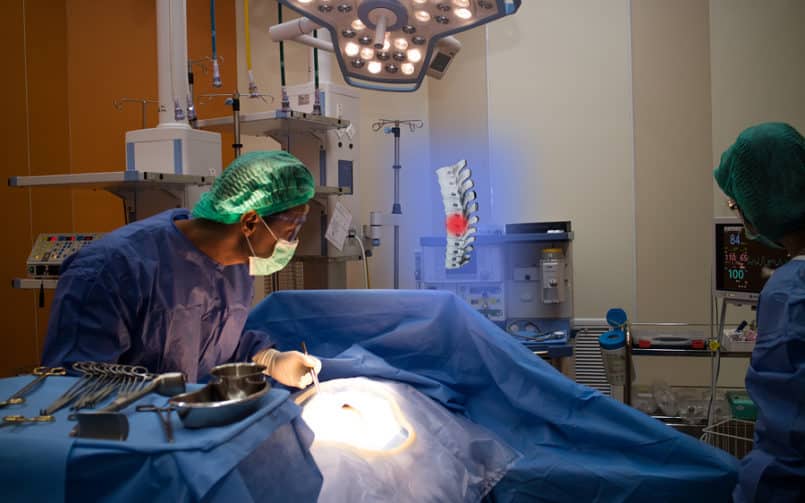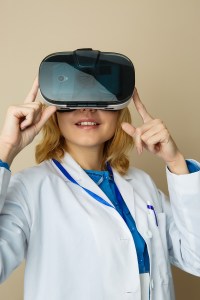In the 90s, virtual reality technologies seemed to be poised to take over the entertainment industry. In the 2010s, virtual reality, and its close cousin augmented reality, is starting to revolutionize every corner of the culture, including the medical community.
Augmented reality differs from virtual reality in that, while virtual reality creates the user’s simulated environment from scratch, augmented reality utilizes the user’s actual environment. Virtual reality can put you on a roller-coaster on the moon. Augmented reality can make a roller-coaster pop out of a children’s book you’re holding. Often, augmented reality apps will utilize a phone’s app and camera display, or a virtual-reality-like headset modified to allow you to see through the outside environment.
While it may not be immediately obvious how this will revolutionize the medical industry, the implications are wide-ranging. On-going developments are very noteworthy, especially for doctors who want to be proactive in finding new ways to tackle their patients’ issues.
Here are just a few ways that augmented reality devices are being developed right now to help doctors thrive in their practices.
OpenSight Wants to Use Augmented Reality to Give Your Surgeon X-Ray Vision
OpenSight, an augmented reality system developed by tech firm Novarad, utilizes in-depth imagining of a patient to allow the surgeon a to see inside the patient’s body before surgery. Basically OpenSight, which uses the Microsoft HoloLens headset as its operating device, would give the surgeon x-ray vision, giving the surgeon an opportunity to find any difficult or obstructed areas they might encounter.
The app, which is still in the developmental stage, would work alongside other virtual surgical tools, making surgery more precise and safe. It is also being developed to work within a mobile network of medical professionals, allowing those with experience around the world to weigh in on difficult procedures.
Although the app is not currently in use, it was recently approved for use by the FDA.
Take a look at the app in action in this video.
I’ll Have the Hot Dog, Soda, and Medical Screening Combo, Please
Akos Medical, a healthcare company specializing in telemedical services, just developed and deployed augmented reality urgent care clinics in a Phoenix-area Safeway. Akos’s plan, according to the Associated Press, is to have clinics in 50 Safeways by the middle of next year.
The urgent care center would utilize various augmented reality and wearable technology devices to guide a patient through a self-administered diagnostic screening. An artificial intelligence program then asks the patient follow up questions based on the diagnostic data collected, and then sends the whole “check-up” to a medical professional working remotely, where it is analyzed. As opposed to a traditional check-up, a check-up at Akos Medical takes about 15 minutes, according to its website.
“In-Depth” Study Materials via Augmented Reality
Despite what your over-enthusiastic local library might claim, books have limits. Unlike electronic books, which can link instantly to cited content, books can only direct you to sources by labeling them. That means hours that a med student wastes every year pacing the stacks trying to find yet another obscure medical journal.
But Elsevier Health has just introduced an augmented reality app that fixes this inefficiency. According to Medgadget, Elsevier’s Gunner Goggles Series is a seven-book series that covers neurology, pediatrics, and psychiatry. When a user wears the Goggles while reading the books, the app “can display related animations, photos, videos, and links to stories around the web.”
That means less time searching the stacks, and more time spent on valuable research.
You can view a demo of the new app below.
The best part about these advancements is that augmented reality is still in its relative infancy. Given these developments, what does the next decade have in store for healthcare?





